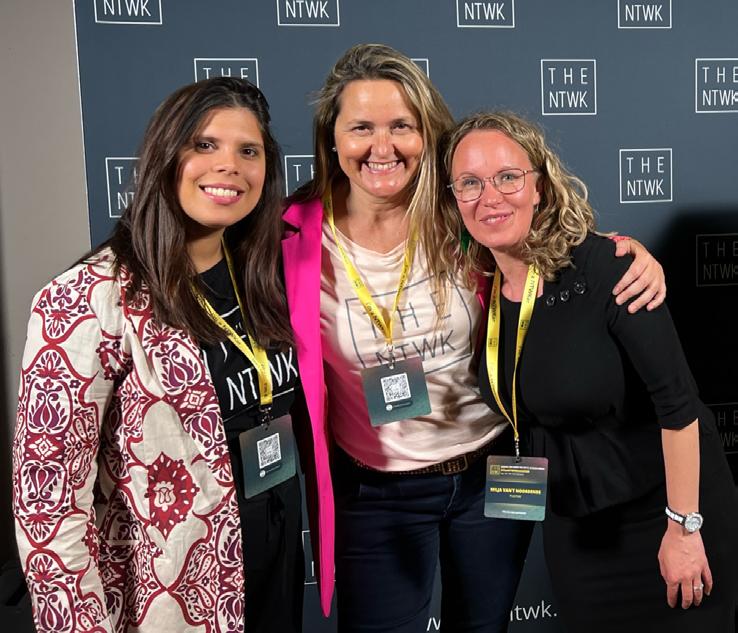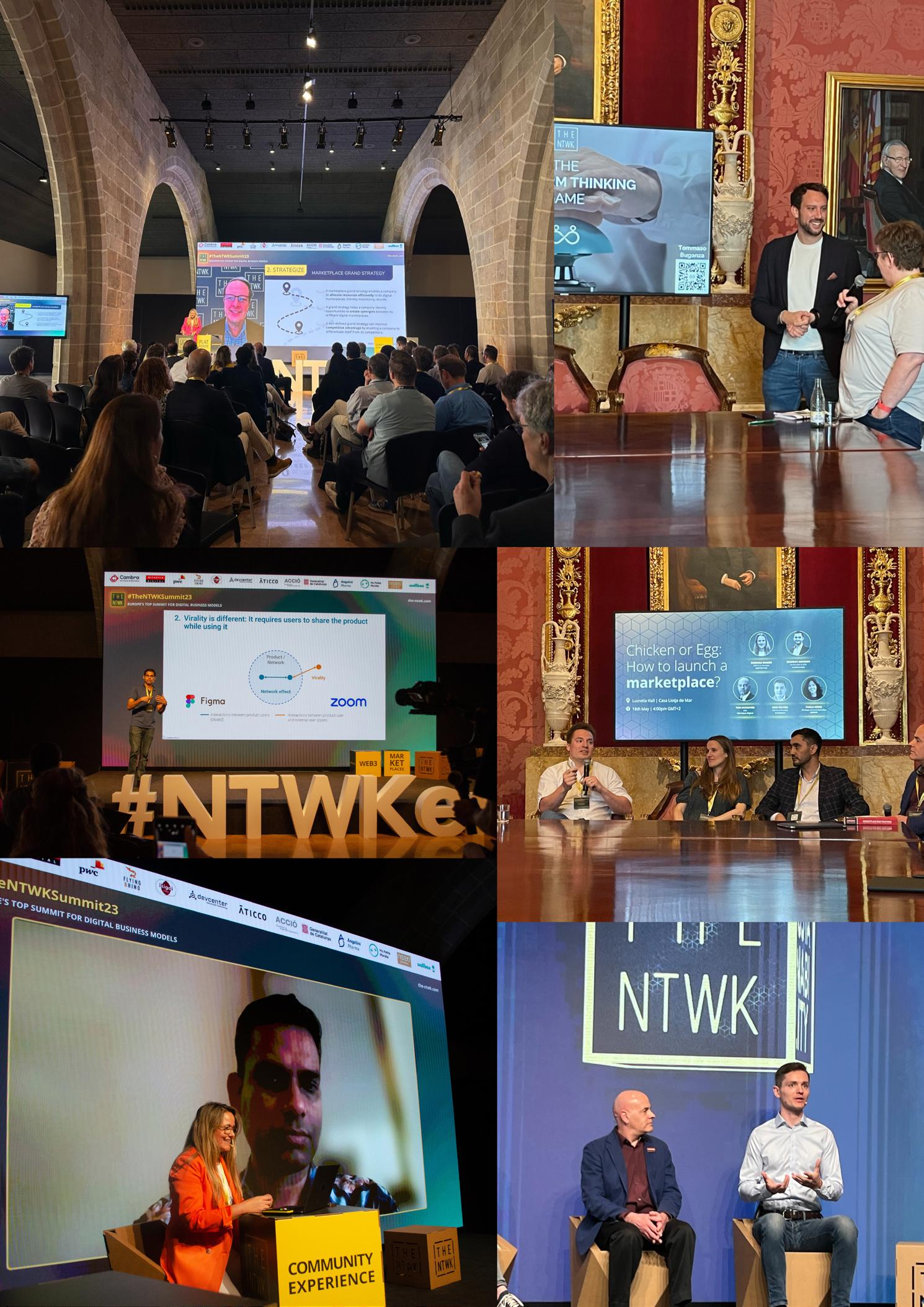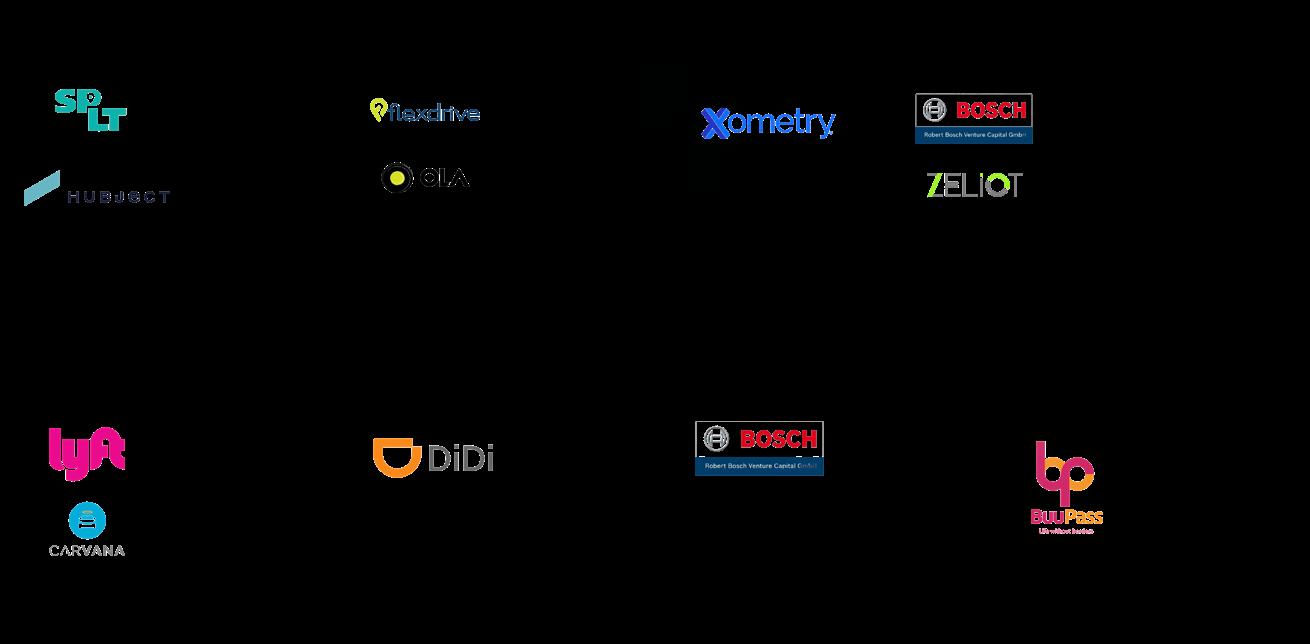

WHO WE ARE
TheNTWK (The Network) is the leading community for digital business innovators, coming together to shape the future of the global digital economy.

We connect corporates, entrepreneurs, advisors, venture capitalists, and academics to create a hub of knowledge around digital business models, such as platforms, ecosystems, and marketplaces, at the intersection of emerging technology trends.
Our community exists to facilitate learning and business growth through collaboration, co-creation, and interaction in a friendly and supportive professional environment. We do this through Knowledge, Interaction, and Fun!

Our goal is to harness the strength of our community to co-create the resources that make TheNTWK the one-stop shop for all things related to networked-based business models thinking and strategy. We offer our members a variety of learning, teaching, advisory, and thought leadership opportunities, including Masterclasses, Workshops, Consulting, Co-created Reports,
Ambassadorship, Speaking, and Meetups.

We hold weekly discussions with guest speakers on #TheNTWKTalks and host special debriefings and community collaboration on #TheNTWKInteracts. Our community platform allows members to share and enjoy the best-curated content, resources, and events. Join us and become part of the leading community for digital business innovators!
Let’s Do Something Big, Made in Europe.
CELEBRATING THE SUCCESS OF #TheNTWKSummit23
#TheNTWKSummit is Europe’s Top Summit for Digital Business Models, an annual event that brings together experts from the digital business landscape in the sunny city of Barcelona to collaborate, exchange knowledge, share ideas, and discover new business opportunities!
On behalf of Marina Planas, Co-Chair and CEO of TheNTWK, and the entire team, we extend our heartfelt gratitude to all the NTWKers, speakers, and guests who made this event truly extraordinary. Your expertise and contributions have left a lasting impact on our community and have inspired us all to strive for greater heights in digital business. Let’s take a moment to reflect on the achievements of the Summit and its impact.
A MOMENT OF GRATITUDE
First and foremost, we would like to express our deepest gratitude to our sponsors, led by Cambra de Comerç de Barcelona and McFadyen Digital, whose unwavering support made this event possible.
We would also like to thank our dedicated dream team, Bety Soca, Katrin Maikova, Anna Noakes Schulze, Milja van’t Noordende, Catherine Schoendorff, Marta Agrech, as well as our vibrant community for their hard work, enthusiasm, and invaluable contributions throughout the planning and execution of the Summit.

Reflecting on the Summit’s Purpose

#TheNTWKSummit23 aimed to explore the transformation from physical to digital experiences, addressing the challenges and opportunities associated with this shift. Throughout the Summit, we engaged in thoughtprovoking discussions, knowledge sharing, and interactive sessions that fostered innovation and growth within our community while advancing knowledge of cutting-edge digital business practices.
Highlights and Achievements
This year’s Summit was a resounding success, exceeding our expectations in every way. We witnessed remarkable moments of collaboration, meaningful connections, and the exchange of groundbreaking ideas. Attendees actively participated, posed insightful questions, and embraced the opportunity to learn and grow. The diverse perspectives shared during the Summit have further fueled our mission to advance digital business models and innovation in Europe and beyond.
The Power of Community
At its core, #TheNTWKSummit23 was a testament to the power of our community. Together, we fostered an environment of inclusivity, support, and inspiration. We celebrated our shared achievements and collectively aimed to shape the future of digital experiences. The
WHAT NTWKers SAY
connections made during the summit will continue to strengthen and evolve, driving us forward on our respective journeys.
Looking Ahead
As we reflect on these many successes, we are inspired to continue our mission of advancing digital business practices, both locally and globally. We remain committed to providing our membership with a one-stop shop for digital business innovators working at the intersection of emerging technologies, with opportunities to learn about the latest digital business trends, upskill and reskill, connect and interact, and grow the practical knowledge that drives digital business to new heights.
Conclusion
In conclusion, we are delighted to share this report which commemorates and celebrates the resounding success of #TheNTWKSummit23: From Physical to Digital Experiences. We invite you to join us and continue in the spirit of collaboration, innovation, and community as we embark on the next chapter of our digital business journey. Together, we will shape the future and continue to drive positive change in the digital landscape in Europe and beyond.
Marina Planas, Anna Noakes Schulze & Peter C.Evans Co-Chairs TheNTWKSummit

During our first two editions, we asked attendees about their experiences. Their words are: inspirational, insightful, family, future, experience, energizing, invigorating, groundbreaking...
“TheNTWKSummit was an amazing event that packed a wide array of diverse digital topics, highly innovative concepts, and an international audience into two days. I left the event energized and inspired by all the positive impact that innovation and technology can still bring to the world. “
“Traditions are part of culture and they can be positive but new traditions are shaped by new disrupting ideas that create improvements. At TheNTWK the discussions we are having are extremely relevant for the EU to be competitive and at the forefront of innovation.”
“It’s the first time that we attend an event like this and it has been very positive. We are now willing to connect with TheNTWK Community and continue the conversation. “
“This edition of TheNTWKSummit provided interesting discussions on best practices and lessons learnt for incumbents to embrace B2C and B2B ecosystem business models.”
 Miriam Cordero Salesforce
Miriam Cordero Salesforce









PLATFORMS & MARKETPLACES

See Our Platforms & Marketplaces Activities!


The platform (and marketplace) revolution has brought about a transformative shift in the business landscape, offering companies unprecedented opportunities in the digital economy. While Europe may lag behind the US and China in terms of large-scale platforms, the region boasts a diverse range of innovative platforms that cater to different needs and markets. By combining Europe’s commitment to the circular economy with the power of platforms, the region can gain a competitive advantage, drive innovation, and create value for businesses and consumers.
Top 10 Key Takeaways
1Strategy for Success
Every company should have a strategy for the platform economy that considers different positions from creating a platform, building on top of existing platforms to working with platforms..
2Platforms and Circular Economy Companies can leverage the concept of a circular economy to create platforms that drive innovation, reduce waste, stimulate product redesign and provide value to businesses and consumers.
3Advantages of Circular Marketplaces
Lower transaction costs, More buyers and sellers, Positive network effects, Expanded reach, Incentives for product redesign, Easier to grow community, Incentives for ecosystem innovation.
4Fundamental Questions to Answer
A successful platform business is characterized by its ability to answer four fundamental questions: where to play, how to scale, how to win, and how to capture value.
5Platforms for Good Platforms have created concerns on inequality, power imbalance and privacy. To address these, platforms should actively participate in developing fair and effective regulations and embed ethical principles in their incentives and protocols.
6Why corporate should consider platforms?
Platforms encourages business to act as enables, connecting various stake holders to create new value propositions and revenue streams, Platforms can alleviate inefficiencies and enable corporations to stay top-ofmind for customers and continue delivering value.
7Network effects vs Virality
A network effect occurs when adding a user to a network makes the network more valuable for all users bringing scalability and defensibility. On the other hand virality refers to the phenomenon where growth leads to more growth, as users spread the word.
8Rise of B2B Marketplaces
B2B platforms growth135% growth last year and providing opportunities for niche specialization. Niche marketplaces cater to specific markets or industries, offering targeted and tailored shopping and a more level playing field for smaller brands and entrepreneurs.
9Vertical Integration, Insights and Trust
Modern marketplaces focus on vertical integration by offering additional services that strengthen the value proposition, and valuable tools like dashboards and reporting that provide meaningful insights. Ethical business practices, sustainability and trust are also increasing in importance.
10Chicken or egg, how to launch a marketplace?
B2B Marketplaces typically focus on attracting buyers first, as they are the one driving the demand for the products and services offered. B2C Marketplaces often attract sellers first, as they are the ones providing the products and services that will attract buyers.
Oliver Birk Director Platform Business BASFCoatings
“Not everybody needs to own a platform - but you need to have a strategy to deal with them.”
The Power of Platforms
Celebrating Europe’s Diverse Platforms

Europe may lack scale, but it does have a wealth of diverse platforms. From food waste reduction platforms like Too Good To Go to mobility platforms like Berlin’s Jelbi, Europe is home to a variety of innovative platforms catering to different needs and markets (Fig. 1). The region also boasts several world-class platform software providers, such as Mirakl, Commercetools, and Sharetribe, which enable the creation and growth of platforms worldwide.
Strategizing for Success: A Marketplace Grand Strategy

Large incumbent companies in Europe have a significant role to play in the growth of European platforms. Many of these companies are already participating in existing platforms, launching their own platforms, or making strategic investments in platform companies. However, to create a cohesive and integrated approach to platform growth, these companies must develop a marketplace grand strategy.

Today, platforms have become an essential component in the global digital economy. However, Europe faces a challenge: it lags behind the US and China in terms of creating large-scale platforms. Last year, Peter C. Evans mentioned that European platforms would need to grow 16 times their current size to catch up. Strategies were discussed to address this challenge, including fostering the growth of platform startups, expanding existing incumbent platforms, embracing new opportunities like Web3, and developing dedicated super apps tailored to the unique characteristics of the European market. Additionally, investing in platform talent and leadership is crucial to this endeavor.
This year is time to celebrate, strategize and build.
PETER C. EVANS

 Co-chair
MIT Platform Strategy Summit
TheNTWK Summit
Co-chair
MIT Platform Strategy Summit
TheNTWK Summit
A marketplace grand strategy involves allocating resources efficiently within a firm to launch multiple platforms that create synergies and competitive advantages. For example, Bosch has developed a marketplace grand strategy that includes participation in major platforms like Amazon, Alibaba, and eBay, launching over nine platforms and ecosystems, and investing in more than a dozen platform companies through its corporate venture arm.

The Fig. 2 showcases Bosch’s investments in platforms and marketplaces from 2016 onwards, reflecting their diverse range of investments. Notably, Bosch has made investments in ride-sharing companies across Europe, the United States, China, and even India (as seen with Ola). Initially focusing heavily on the ride-sharing sector between 2016 and 2019, Bosch has since expanded its presence into other domains, such as making an investment in Xometry, a 3D printing platform. Overall, this serves as a compelling illustration of a highly engaged corporate entity navigating its path in the platform investment landscape.
Building Platforms: Marrying Circular Economy and Platform Business Models
One area where Europe can gain a competitive advantage is by combining its passion for creating a circular economy with the power
of platforms. By creating platforms that facilitate a circular economy, European companies can drive
need for solutions to deal with endof-life EV batteries. Used EV batteries can be repurposed for use in power generation and other applications, or they can be broken down to extract valuable materials for recycling. A dedicated platform for the exchange of these batteries can drive innovation and create value for both businesses and the environment.
Example 3: A Platform for Lubricant Recycling
innovation, reduce waste, and create value for businesses and consumers.
Example 1: A Circular Marketplace for Used Plastics
One example of marrying the circular economy and platform business models is the creation of a circular marketplace for used plastics. Automotive companies like BMW have already committed to using more recycled plastics in their vehicle production, and a platform that connects these companies with suppliers of used plastics can help further drive this commitment.
Example 2: A Marketplace for Endof-Life Electric Vehicle Batteries
With the growth of electric vehicles (EVs) in Europe, there is an increasing
There is currently no vibrant marketplace for the recycling and reuse of lubricants in Europe. A platform for lubricant recycling can help create a more efficient market for used lubricants, fostering innovation and reducing waste. This can benefit both the environment and the economy, creating value for businesses and consumers alike.
Transformative Innovation In Traditional Sectors
Untapped potential for transformative innovation exists in traditional sectors that have been the backbone of economies for decades. By facilitating cross-industry collaboration, embracing people-centric approaches, community building, and learning from both successes and failures, stakeholders can cultivate a culture of innovation that transcends industry boundaries and drives systemic change. This diverse group of panelists, including innovators, entrepreneurs, and policymakers, recently came together to explore this topic.
19N Strategies












Unlocking innovation through cross-industry collaboration
By connecting with other industries and stakeholders, traditional sectors can unlock new opportunities and drive innovation. This cross-industry approach also highlights the need to build strong communities to drive transformative innovation. The key to transformative innovation is to innovate between industries rather than solely within. A great example given is the Swedish mining sector, where companies are now aiming for fossil-free steel. By using bio-residues from pulp and paper or agriculture industries, they create a syngas with similar efficiency to natural gas. This leads to connections between previously unrelated industries, new business models, and regulatory changes.
to the overall growth and success of the collaborating industries.
Maintaining a people-centric approach to innovation


The success of any innovation effort depends on how well it is received and adopted by the people it is meant to serve. This means that understanding the needs and wants of customers, employees, and other stakeholders is critical for transformative innovation in traditional sectors. This human angle emphasizes the importance of putting people at the center of transformation efforts to drive meaningful change, including overcoming regulatory barriers.
Cross-industry innovation allows different industries to share and combine ideas, technologies, and resources, creating new and innovative solutions that are greater than the sum of their parts, hence promoting a 1+1=3 mentality. This approach not only leads to the creation of products and services which resonate more closely with the customer needs but also opens new business models, markets, and revenue opportunities, further contributing
Although digitalization is often perceived as the end goal of modernization endeavors, it’s not. Instead, it should be seen as a powerful tool that can enable companies to accomplish their objectives more effectively. The real challenge, however, is the people, not the technology. As such, the success of digital transformation is linked more closely to people’s attitudes, behaviors, and values than to technological advancements. These are often more challenging than technological changes.
RITA GIMENEZ OCTAVI UYATo bring stakeholders on board, trust must be cultivated with those who believe in the transformative vision. Beginning with people who share your vision and patiently educating them about the initiative’s benefits to establish a stable community of supporters that grows as the initiative progresses.
Fostering a collaborative community for transformative innovation
The process of transformative innovation extends beyond industry boundaries. Building a community is essential, as transformation goes beyond industry; it involves shaping a socio-economic system on a broader scale. Not only this, but the empowerment of the community and providing them with a platform to voice their opinions is crucial when bringing them together. Stakeholders must come together and exchange ideas for constant improvement.
achieving a balance between efficiency and innovation and learning to think outside the box.
Ultimately, to achieve transformative innovation, organizations must change business models, behaviors, and the mindset of the people. This is harder than a technological change. The key is to start with the people who trust your vision because not everyone will be convinced on the first day. The discussion on transformative innovation has taught us that innovation requires a deep understanding of people’s needs and is not just about creating new technologies. It requires a shift in mindset to work between sectors, build communities, and prioritize the customer and employee experience. It is about listening to the needs of the people and learning from our failures to achieve a systemically transformative change. And perhaps what’s most important is to remember that the joint endeavor of multiple industries or entities can generate an outcome that exceeds the sum of their individual contributions. A true 1+1=3 outcome, inspiring us to push boundaries and embrace new realms of opportunity and growth.
Cultivating a culture of innovation
We want to leave you with some food for thought to inspire future discussions. From embracing change to finding a supportive community, keep in mind the key takeaways from the panel discussion that offers insights into how organizations can cultivate a culture of innovation and evolve with the times.
This community of customers, employees, regulators, investors, and other stakeholders can drive transformative innovation. Actively listening to them provides valuable insights. However, transforming an entire industry requires more than incremental improvements. Innovation often comes from “radical outsiders” of an industry. These outsiders can identify new opportunities without being burdened by its history or limitations on exploring alternative options.
Learning not only from best practices but also failures
A final point is the need to learn from failures. And to celebrate them! Transformative innovation is not an easy process, and it requires organizations to take risks and learn from their mistakes, not only from best practices. By learning from past failures, we can continue to drive transformative innovation in traditional sectors. It is about
Written by Frédérique de Lange ©TheNTWKWant to keep the discussion going? Challenge others to explore further avenues of thought using the following question:
• How can we encourage more cross-sector partnerships in our industries?
• In addition to community building, what else is essential to catalyze transformative innovation?
• How can we encourage more radical outsiders to participate and collaborate with traditional sectors for transformative innovation?
• How can we transform regulation while regulators remain in control?
• How can we decentralize power across industries?


